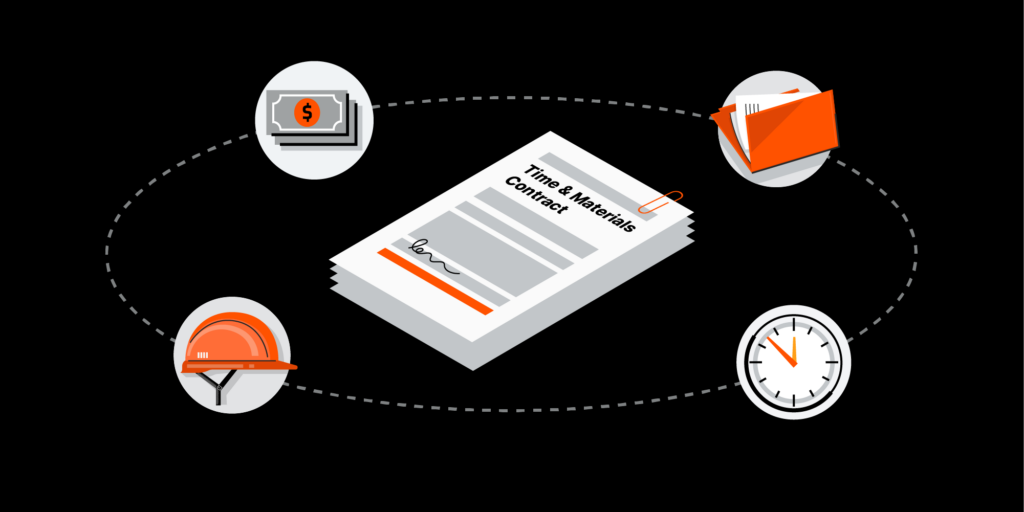— 14 min read
Construction Cost Codes: Best Practices and Industry Insights



Last Updated Aug 7, 2025

Kristen Frisa
Contributing Writer
111 articles
Kristen Frisa is a contributing writer for Procore. She also contributes to a variety of industry publications as a freelance writer focused on finance and construction technology. Kristen holds a Bachelor of Arts in Philosophy and History from Western University, with a post-graduate certificate in journalism from Sheridan College. She lives in Ontario, Canada.

Teresa Buturusis
Senior Strategic Product Consultant, General Contractors
Teresa is a Senior Strategic Product Consultant at Procore. She has almost 20 years of experience in construction finance, working for large general contractors like Alberici Constructors. Teresa has an MBA from University of Illinois Urbana-Champaign.

Taylor Riso
Contributing Writer
91 articles
Taylor Riso is a marketing professional with more than 10 years of experience in the construction industry. Skilled in content development and marketing strategies, she leverages her diverse experience to help professionals in the built environment. She currently resides in Portland, Oregon.
Last Updated Aug 7, 2025

Construction cost codes are unique identifiers that allow companies to track, organize and categorize their costs. Cost codes are the building blocks of all financial aspects for construction firms from initial budgeting and estimating to ongoing tracking, reporting, decision-making and invoicing. They create a standardized system that provides a way to monitor the overall success and financial performance of not only specific projects but also the entire firm.
In this article, we explore the significance of cost code and common cost coding systems, guide you through their implementation and share best practices to maximize their effectiveness.
Table of contents
Understanding Construction Cost Codes
Construction cost codes provide a standardized system of organizing and tracking costs associated with different aspects of a construction project.
Cost Code Types
Each cost code is assigned to a specific aspect of the construction project, such as labour, materials, equipment, overhead and various construction phases.
- Labour: expenses related to the workforce involved in the construction project, including indirect and direct wages, salaries, benefits and other costs associated with the labour force
- Materials: expenses related to the physical elements used in construction, including raw materials, components and any items purchased.
- Equipment: costs associated with the use and maintenance of construction equipment, including purchasing, renting, operating and maintaining machinery and tools used on the construction site.
- Subcontracts: expenses associated with subcontracted work or services provided by a specialty trade partner.
- Administrative/Overhead: administrative costs, including legal fees, insurance and office-related expenses.
Work Breakdown Structure
Cost codes are organized within a work breakdown structure (WBS), hierarchically with each tier indicating a different level of classification. They start with broad categories and become more specific. For instance, a cost code for "Plumbing" could further be broken down into subcategories such as "Pipes and Fittings," "Fixtures," "labour," and so forth.
This breakdown will then be represented using a coding system. Though many businesses will structure their codes based on their individual needs, the most common cost coding systems used in construction are:
- MasterFormat: CSI MasterFormat is one of the most recognized coding systems in the construction industry. Often called the 'Dewey Decimal System' of construction, MasterFormat offers six-digit specification numbers segmented into three distinct tiers to categorize project costs.
- Uniformat: While MasterFormat is more about the materials and work methods, Uniformat is oriented around the building's functional parts. Also created by CSI, UniFormat classifies building elements and systems, aiding in design and lifecycle management. Often incorporated during the initial design and preconstruction phases of Canadian projects, it streamlines cost tracking and design option evaluation.
Examples of Cost Codes
Below is an example of Procore's default cost codes broken down, showing the individual cost code segment items within each of the MasterFormat's divisions.
| Division # | Cost Code # | Cost Code Description |
|---|---|---|
| 16 (Electrical) | 16-050 | Basic Electrical Materials and Methods |
| 16 (Electrical) | 16-200 | Electrical Power |
| 16 (Electrical) | 16-300 | Transmission and Distribution |
| 15 (Mechanical) | 15-100 | Plumbing |
| 15 (Mechanical) | 15-300 | Fire Protection Piping |
| 15 (Mechanical) | 15-500 | Heat-Generation Equipment |
The Importance of Construction Cost Codes
Construction cost codes are fundamental for effective project management, financial control and communication.
Accurate and Streamlined Cost Tracking
Cost codes ensure uniformity in classifying and tracking costs by adopting a standard coding system. This standardization streamlines the cost-tracking process, making it more consistent and less prone to errors. Utilizing cost codes helps guarantee that every project expense is meticulously recorded and tracked, providing a comprehensive understanding of where costs are allocated.
Integrating cost codes into project management systems allows project stakeholders to monitor costs in real-time. This allows for proactive decision-making as issues or deviations from the budget are identified promptly.
The use of cost codes also create consistent reporting standards across different projects and phases. When everyone in a firm follows the same coding system, generating uniform financial reports and gaining insights into firm performance becomes easier.
System of Communication
The standardized nature of cost codes establishes a common language for the entire project team to discuss financial aspects. This fosters a shared understanding of project costs, allowing for efficient collaboration, decision-making and problem-solving. Cost codes, in essence, bridge communication gaps, ensuring that all project stakeholders are on the same page regarding the project’s financial standing.
Greater Transparency Around Project Costs
In a standardized system, each code corresponds to a specific category or aspect of the project, allowing stakeholders to see a comprehensive and itemized list of where costs are allocated. By eliminating any ambiguity about the nature of expenditures, providing this level of detail increases transparency.
Cost codes provide a system to document how costs are allocated and spent on a construction project. With a transparent cost trail, firms can demonstrate accountability, compliance with necessary regulations and adherence to any budgetary constraints.
Depending on the contract structure between an owner and a contractor, allowing owners to monitor how project costs are allocated through standardized cost codes is a surefire approach to building trust. This openness and clarity lay the foundation for establishing long-lasting partnerships. In the construction industry, where trust is paramount, transparent practices become a key factor in ensuring client satisfaction, promoting successful collaboration and ultimately securing opportunities for repeat work.
Implementing Cost Codes on a Construction Project
In the realm of construction projects, understanding how to implement cost codes is one key to effective financial management and clear project oversight.
Defining and Establishing Cost Codes
Successfully implementing cost codes in a construction project begins with a thoughtful and systematic approach to their definition and establishment at a firm level. This begins with creating a unified framework that not only aligns with the type of work the company does but also aligns seamlessly with its broader financial and operational needs.
The specific cost codes that a construction firm employs are intricately linked to the nature of the work they undertake. For example, a concrete subcontractor mainly deals with tasks related to concrete and uses cost codes to track labour, materials and other costs related to this specific trade. Because the concrete subcontractor does not provide electrical or plumbing services, they don't need cost codes for these tasks.
A general contractor, on the other hand, will have cost codes for concrete, electrical, plumbing and other trades as they are tracking costs and managing these other aspects of the work. This adaptability in crafting a cost code system suited to their specific work enables construction firms to optimize resource management and monitor expenses effectively.
Coordinating Cost Codes Across Departments
Engaging key stakeholders at the early stages of the cost code definition process is important to making sure the established framework aligns with practical implementation. This includes project managers who oversee the construction work and expenses, accounting teams responsible for fiscal accuracy and reporting and superintendents who have boots-on-the-ground insights. Gaining insights during the preliminary stage ensures the cost codes implemented allow for both operational and financial oversight, both in the office and directly on the construction site.
Another important aspect of this is regularly examining and evaluating the established cost code framework. Actively seeking feedback from team members who engage with these codes daily, whether on the financial side or the operational front, offers invaluable insights into potential areas of improvement as well as identifies any challenges faced during use. By maintaining this open channel of communication, firms can make sure their cost code system remains adaptive, relevant and optimally aligned with the evolving dynamics of construction.
Cost Codes in Budgeting, Tendering, & Contracts
Cost codes serve as a bridge or tie between project management and financial management in budgeting, tendering and contract development.
Budgeting
During the budgeting phase of a project, cost codes allow estimators and project managers to break down project budgets into granular categories, making it easier to allocate costs to specific types of work or materials. This approach checks that every financial aspect of the project is accounted for and sets the stage for real-time monitoring during construction. As expenses roll in as the project progresses, cost codes enable accurate monitoring against the predefined budget, highlighting any discrepancies or potential overruns early on.
Tendering
Tendering is about facilitating a competitive selection process to deliver the right balance of cost, quality and skill. Introducing cost codes into this phase offers a standardized framework for tender submissions, bringing clarity and uniformity to the process. Contractors can categorize their estimates based on the predefined cost codes, making their tenders transparent and easily decipherable. For those assessing the tenders, this level of uniformity simplifies the tender levelling process, ensuring assessors make apples-to-apples comparisons and easily identify the best value.
Contracts
When embedded into contract documents, cost codes act as a reference point, ensuring all parties have a clear and shared understanding of the financial breakdown of the project. Furthermore, categorizing costs and work according to these standardized codes reduces ambiguity around scope, timelines and responsibilities. This clarity prevents potential misunderstandings and disputes and provides a clear roadmap for project execution, aligning every stakeholder around expectations and deliverables.
Integrating Cost Codes into Project Management and Accounting Software
With technology becoming increasingly intertwined with the construction industry, the integration of cost codes into software platforms has emerged as a pivotal piece of modern construction project management.
Implementing
This begins with software selection. It's important to opt for platforms designed with built-in cost code integration capabilities and offer ample flexibility. This adaptability makes sure the software meets the unique demands of the firm and can adapt to the changing dynamics of individual projects.
Reporting
Every piece of data, when anchored to the right cost code, helps the software's functionality align with onsite realities. Maintaining the integrity of the system demands a collective and sustained effort from all involved parties. Regular checks, validations and timely adjustments to the entered data are integral to the software's success in serving its purpose.
Monitoring
By generating comprehensive financial reports centred around cost codes, project managers can gain real-time insights into financial dynamics. This visibility becomes instrumental in monitoring budget adherence, swiftly identifying discrepancies and formulating data-driven decisions that align with the project's financial health and overall goals.
Many businesses use different software platforms for project management and accounting using cost codes as a uniform reference across these systems. This method allows cost codes to serve as a bridge between any potential gaps, ensuring smooth data flow and reduced manual adjustments.
Centering cost codes at the heart of software implementation sets the stage for more organized, transparent, and efficient project management.
An Example of Using Cost Codes
Let’s examine how cost codes work in the case of a hypothetical construction project.
A mid-sized general contractor, Precision Builders, has been hired by a developer to build a ground-up commercial mixed-use building with retail on the ground floor and office space on the upper levels.
Standardizing Cost Codes
Established in 1999, Precision Builders brings more than two decades of industry experience to the projects they work on. Over the years, they've refined their practices and adopted a cost code framework that aligns with the industry-recognized CSI's MasterFormat Divisions.
No matter the uniqueness or scale of the project, companies use the same standardized structure for cost codes. For the mixed-use building project, this means the project team has a predefined roadmap for budgeting, tracking and managing costs from the get-go.
Estimating
Before breaking ground, Precision Builders creates a detailed estimate for the developer. The company's cost code system plays a pivotal role here, allowing the team to break down costs for every phase, material type and labour category and providing a clear roadmap of anticipated expenses.
Precision presents the developer with an organized and clear estimate, building trust by showing exactly where and how it will allocate funds.
Tendering
As the project progresses to tendering, Precision requires subcontractors to submit their tenders in a manner that aligns with their cost coding system. With all tenders structured using the same cost coding system, Precision is able to quickly and efficiently compare and analyze tenders. This reduces the time spent on interpreting and translating various tender formats and structures and allows for an apples-to-apples comparison.
Using a uniform system allows Precision Builders and tenderers to discuss any discrepancies or questions by referencing specific cost codes. This minimizes potential misunderstandings, minimizes potential scope gaps and promotes a more transparent dialogue.
Tracking
During construction, the Precision team tracks and monitors every expense and transaction, mapping each to a specific cost code. This systematic approach enables the project manager at Precision Builders to oversee costs in real-time, promptly identify potential budgetary overruns and take immediate corrective action when necessary. The integration of cost codes into subcontractor tendering enhances the accuracy of tracking real expenses versus projected ones.
Since subcontractors aligned their tenders with Precision's cost code system, their invoices follow the same structure. This consistency simplifies the approval and payment process for Precision Builders, as they can easily verify the accuracy of charges against the initial tenders and the work completed.
Leveraging
Leveraging the cost code system, Precision Builders can provide the client with itemized invoices that break down every charge by specific cost codes. This granularity helps the client know exactly what they're paying for, from labour costs for specific tasks to material expenditures.
The implementation of a standardized cost coding system doesn't just impact the initial stages of project estimation or tendering; it permeates every financial and project management aspect of the construction lifecycle. For Precision Builders, employing cost codes does more than just streamline construction project management. It fosters transparency, reinforcing trust with clients and cultivating a collaborative relationship with their subcontractor partners.
Best Practices for Managing Cost Codes
The efficacy of cost codes hinges on how effectively they’re managed. Let’s review some best practices for managing and using cost codes:
Establish a robust structure from the beginning.
Setting up a cost code structure requires careful forethought. Dedicate the time to determine which expenses you'll need to monitor and the depth of detail needed. It's crucial that these cost codes resonate with both operational and project-specific requirements of the firm.
Adjusting a system becomes more challenging once you integrate it into project management and accounting software; Investing the time and effort upfront in establishing them correctly is more efficient. It's essential to structure the cost code system with enough flexibility to adapt or incorporate additional layers of granularity.
Creating a comprehensive and well-categorized cost code system allows firms to lay a foundation for uniform application, but a one-size-fits-all framework for cost codes is no longer suitable for every construction firm—the data collected is only as useful as the people collecting it. For some, creating a robust system of cost codes may be too cumbersome to track costs, and therefore, the information collected becomes skewed.
Striking the right balance is key — enough detail to capture essential information without creating an overly complex system that hinders efficiency. The ultimate goal is to tailor the cost code structure to align with the unique demands of each firm, ensuring that financial tracking is not only meaningful but manageable.
Engage in periodic reviews and updates.
The construction sector is dynamic, with industry norms and standards continually evolving. As such, firms should prioritize regular reviews of their cost code frameworks. Adapting and refining these codes at a firm level ensures they remain relevant and attuned to both industry standards and internal operational shifts.
Train project teams on the framework.
For a cost code system to be universally effective across a firm, its employees—at all levels—must be well-versed in its structure. Regular training sessions and workshops dedicated to cost code management can make sure that everyone, from junior staff to senior management, understands and applies these codes effectively. Incorrectly applying cost codes hinders stakeholders from accurately evaluating a project's financial health and gauging the overall fiscal performance of the firm.
Document & communicate cost code data.
Just as it's important to apply cost codes accurately, maintaining detailed and organized records of all cost code data is fundamental for effective financial oversight.
Comprehensive documentation serves as a reference point, enabling stakeholders to quickly understand and evaluate the financial intricacies of a project or the firm's overall fiscal standing. Beyond just documentation, providing clear definitions for each cost code is essential. This way, every stakeholder can effortlessly grasp the specific purpose and relevance of each code, eliminating ambiguities and promoting consistent usage across the board.
Implementing cost codes in a way that reflects the specific needs and priorities of a firm allows project stakeholders to enhance their ability to track, analyze, and control costs effectively for decision-making, providing a clear view of the financial performance of not only specific projects but also the entire firm.
Categories:
Written by

Kristen Frisa
Contributing Writer | Procore
111 articles
Kristen Frisa is a contributing writer for Procore. She also contributes to a variety of industry publications as a freelance writer focused on finance and construction technology. Kristen holds a Bachelor of Arts in Philosophy and History from Western University, with a post-graduate certificate in journalism from Sheridan College. She lives in Ontario, Canada.
View profile
Teresa Buturusis
Senior Strategic Product Consultant, General Contractors
Teresa is a Senior Strategic Product Consultant at Procore. She has almost 20 years of experience in construction finance, working for large general contractors like Alberici Constructors. Teresa has an MBA from University of Illinois Urbana-Champaign.
View profile
Taylor Riso
Contributing Writer
91 articles
Taylor Riso is a marketing professional with more than 10 years of experience in the construction industry. Skilled in content development and marketing strategies, she leverages her diverse experience to help professionals in the built environment. She currently resides in Portland, Oregon.
View profileExplore more helpful resources

The 5 Key Types of Construction Contracts
There are five common types of construction contracts: lump sum (or fixed price), time and materials (T&M), unit price, guaranteed maximum price (GMP), and cost-plus. Each of these contract types...

Time and Materials (T&M) Contracts in Construction: Guide for Contractors & Project Owners
A time and materials (T&M) contract is a construction agreement where the project owner pays the contractor for all material and labour costs on a project as well as contractor...

Invitation to Tender (ITT) Explained for Construction
An invitation to tender (ITT) is an official document issued by a project owner that targets contractors to solicit tenders for a construction project. The ITT provides all tenderers with...

How Construction Feasibility Studies Guide Building Decisions
There are countless steps taken by stakeholders to ensure the success of a construction project — and many questions that need answering before getting started. Can the project be built...